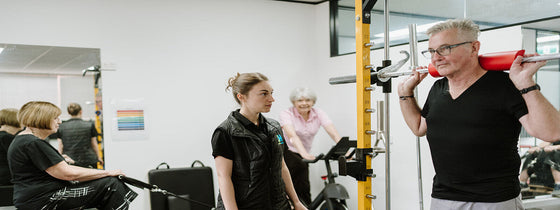Tears the acetabular labrum are a common cause of the hip pain we see come through the doors at OHL. In recent years, with a better understanding of how hip-groin-pelvic pain works, there is growing conversation and awareness about the condition. The acetublar labrum is a cartilage structure that acts like a fence around the hip joint. The labrum has many functions, like keeping a lubricating fluid around the joint, but it’s primary job is to create a deeper socket for the end of your thigh bone to articulate with. Sports such as dancing and football, which involve repetitive twisting, kicking and turning movements, exhibit a higher rate of hip-related injuries than the 10% reported in the general athlete population. Interestingly, all trauma represents only one or the four causes of acetabular labral tears. The other three classifications for the cause of this injury are bony differences, like cam/pincer changes to the end of the femur and/or hip dysplasia; functional alterations, like instability within the hip joint itself and iliopsoas muscle impingement; and, degeneration (aka wear and tear). Tears in the acetabular labrum significantly disturb the inner workings of the hip joint, which can lead to associated problems if left untreated. This is more prevalent if the injured person is still involved in fast movements, kicking and agility sports. Twenty-four muscles cross the hip complex and all work together to facilitate good hip function – appreciating this, you can imagine how physiotherapy plays a key role in the treatment of this condition for so many people.
As this area of the body is so complex, the first step for anyone with hip pain will be utilising an experienced physiotherapist to differentiate what the root cause of their pain is. While we’re seeing more and more acetabular labral tears presenting in the clinic, they are not the only cause of anterior hip and groin symptoms. A thorough assessment is the most important part of understanding the situation best, along with establishing the best treatment program to get you back to your best. Some people may be directed to seek imaging (for example, X-rays, CTs or MRIs) before speaking with a trained physiotherapist, but we don’t generally recommend this as step one in the process of recovery. Although particular cases may require a surgical opinion, our talented physiotherapy team are able to help most people reduce the stress on the tear and/or irritated portion of the acetabular labrum and help people return to action/sport after rehab protocol. Getting strong in our Strength Lab through our group physiotherapy classes is a key part of treatment for some with hip pain. Others will also require input from Dietetics to reduce inflammatory foods in their diet and reduce their body mass. We also closely collaborate with our Myotherapist to maximise soft tissue release, hip joint positioning and range of motion in other joints. If you are suffering from hip pain, we would love for you to reach out to our team to undergo a thorough assessment to find the best steps forward to reduce your discomfort!

If you're experiencing back or neck pain with neurological signs and symptoms, a thorough neurological examination is crucial for accurate assessment and effective treatment. In this Optimal Tip learn more about what we mean by completing a neurological exam!

Squats, deadlifts, and calf raises are key movement patterns that should be part of every strength and conditioning program—regardless of age and activity level. These functional movements support joint health, improve posture and balance, and reduce the risk of injury while building strength where it matters most.

A ganglion cyst is a fluid-filled swelling that typically forms over a joint or tendon sheath, causing discomfort and pain, especially when pressing against nerves or joints. Proper assessment and treatment, including physiotherapy, are essential for managing symptoms and improving function in the presence of a ganglion in your hand, foot, or wrist.